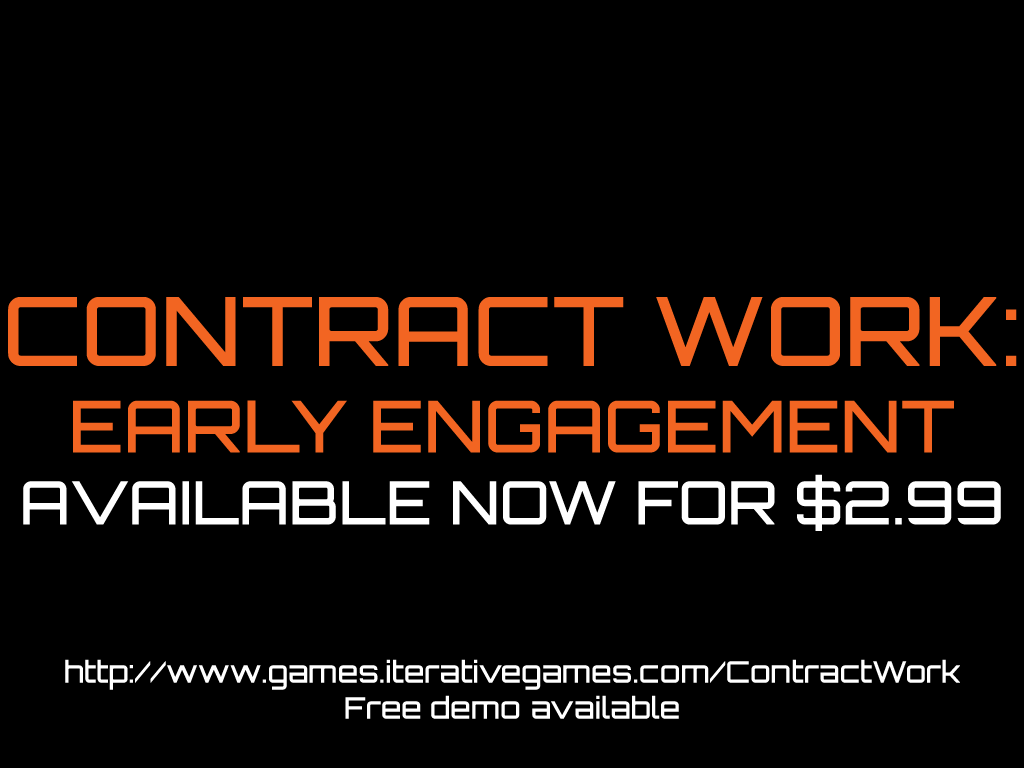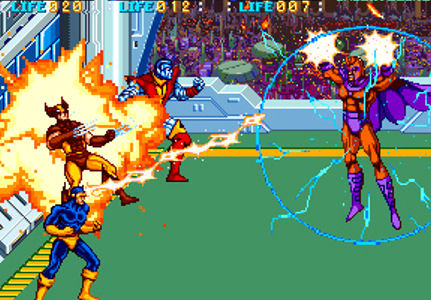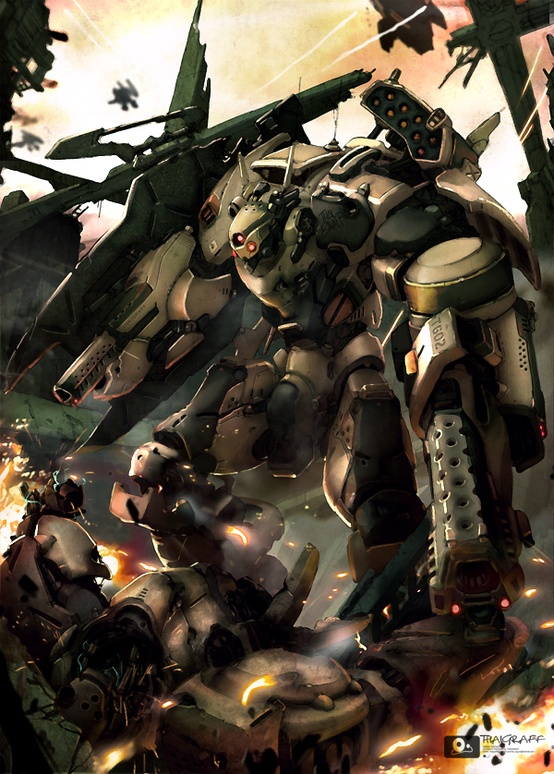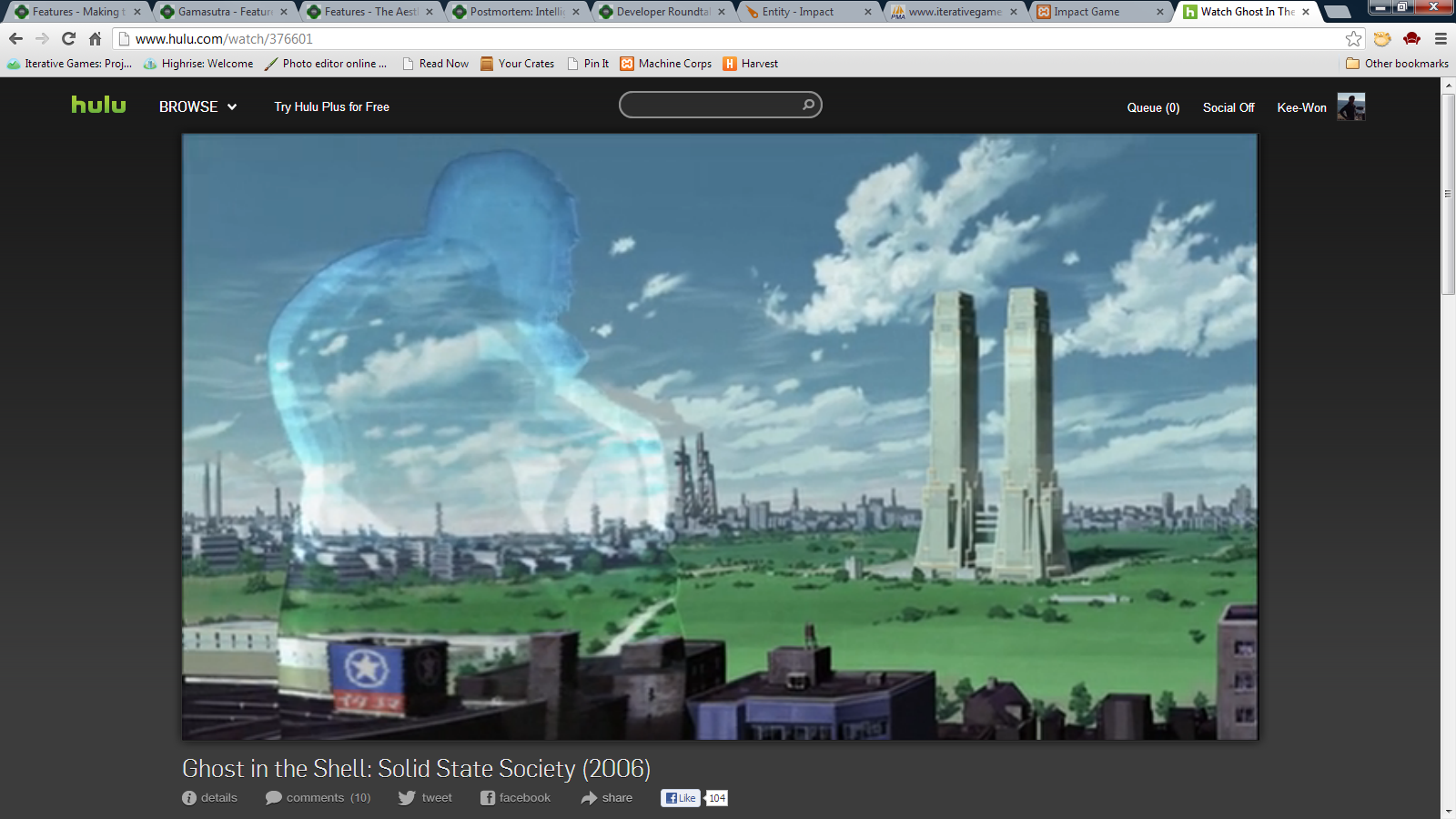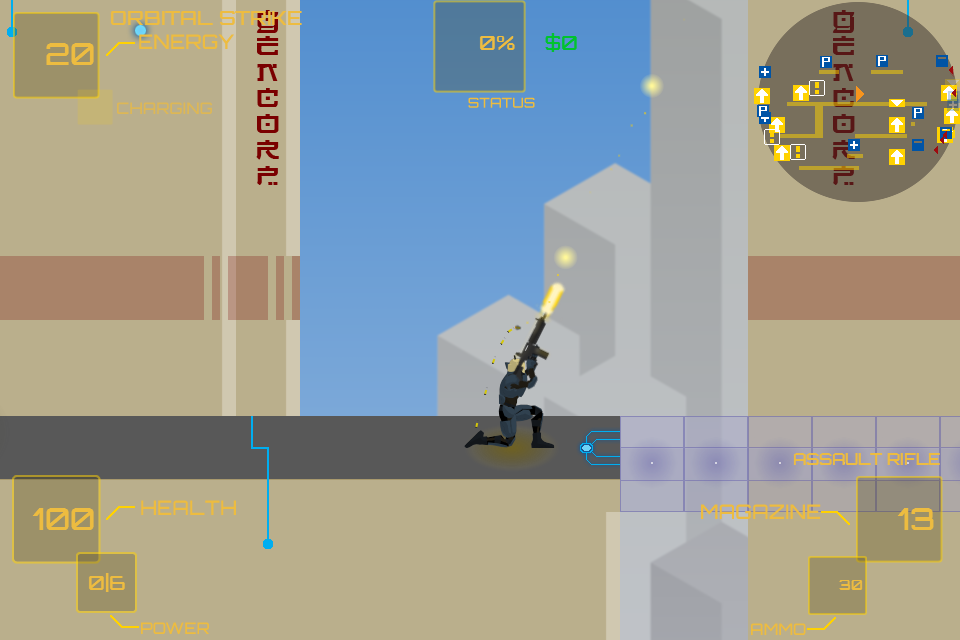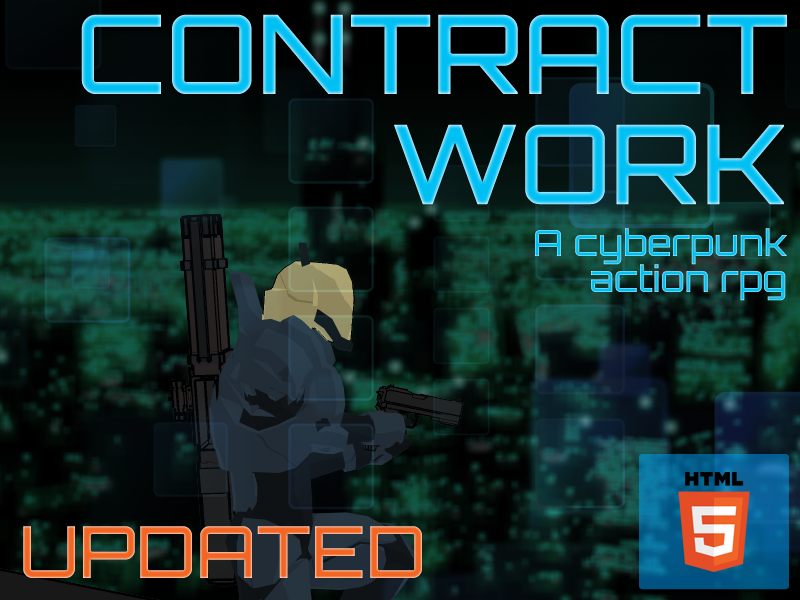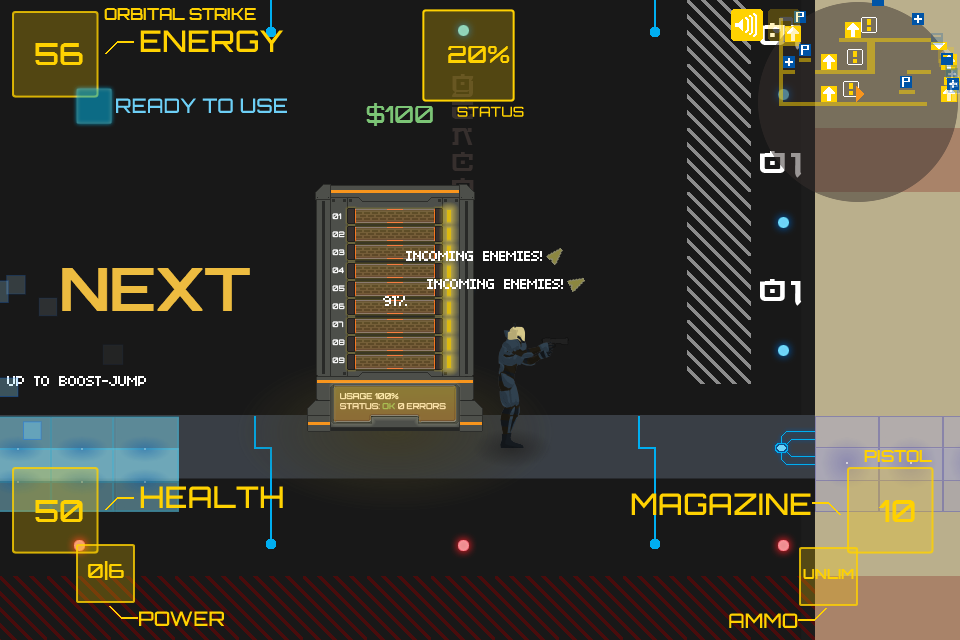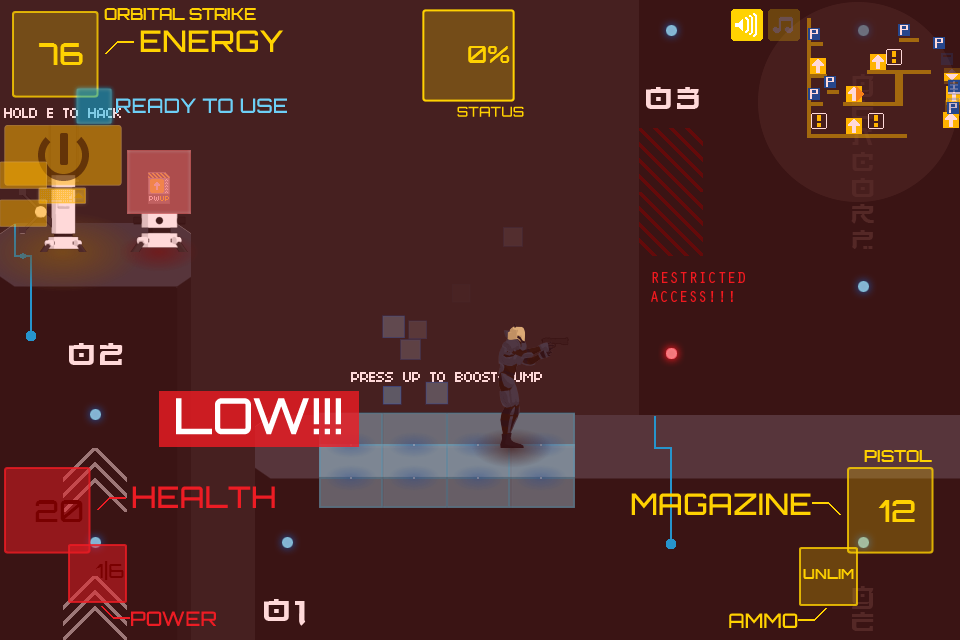Available exclusively at IterativeGames
Author Archives: admin
Creating Contract Work
Hey everyone, if we haven’t met, I’m Kee-Won Hong and I’m a one man Indie game team. I’ve developed a few commercial mobile titles and I’m running a Kickstarter for my first original game, ‘Contract Work‘. I heard some of you might be interested in how I ended up with this concept, so here’s a little insight.
First, thank you to all my collaborators and my Kickstarter backers! This project would never have made it here without your support, input and help. You all have my deepest gratitude.
From the beginning I knew there were a few key mechanics I wanted to include: unique customization, emergent gameplay and open narrative. I knew I wanted to build a HTML5 web game, so I chose the Impact engine for my prototype. Finally I decided that I wanted to do a side scrolling shooter, a genre that is easy to play and one I’ve always loved:
I started with really simple artwork (the first prototype had a smiley emoticon as the hero and red-eyed angry emoticons as enemies) and added really basic functionality (move, shoot). Then I started adding extra toys, mostly to mess around with. A terminal you could hack. A generator that enemies would attack. Now I had a group of actors that I could start putting a game around.
This was our hero. One cool dude. The games title was ‘SpaceTower’
The next ‘phase’ was lots of iterating, and involved throwing out a lot of ideas. Like the elevators that connected each ‘floor’ on a level, which were replaced by jump pads and escape vents. I played/watched lots of shooters (Megaman, Contra, Intrusion) to learn from them. Once I added the final basic ‘game’ requirements – win/lose conditions and a barely functional interface, I started beta testing and thinking about the games theme.
Since the early prototype, I had always pictured the enemies as robots, so they ended up that way. I thought about what would drive our hero to fight them. As I was going through a somewhat exhausting job search at the time, the idea of our hero as a freelance gun-for-hire appealed to me. They answer only to themselves. They have a unique, valuable skill – destroying robots. They could work as highly sought after contractors for rival corporations. Money from those contracts would give the freelancers freedom to customize their gear and leverage to create their own narratives. All of which supported my original goals (awesome!). So now – powerful corporations with robot armies? Smells like cyberpunk to me…
Creating the universe details ended up involving a lot of immersion into cyberpunk source material, like the TV Tropes cyberpunk database, Deus Ex and Ghost in the Shell. Taking a lot of notes on how things operated, how they were visually displayed, what kind of colors existed…this all became part of the universe of the game, a consistent set of rules by which everything operates. Art and design become much easier once you have this framework to utilize, and everything begins to fall into place.
So now you know the origins of the cyberpunk rpg shooter Contract Work. Is it going to be a success? I can’t know, but I do have a hunch about when things are working. I get the feeling that I don’t have to do all the creation; rather I’m just revealing the game, ‘freeing the statue from the stone’. The players will tell me if I’m right, but I’ve been having more of these ‘aha’ moments recently, so I think Contract Work is on the right track.
Thanks for taking the time to read, and please back the Contract Work Kickstarter!
Contract Work Kickstarter
The Kickstarter for my new game ‘Contract Work’ has launched! Contract Work is a player customizable, cyberpunk 2d shooter where you can create your own unique gun-for-hire. Contract Work is a HTML5 game, which means no installing or downloading plugins; just go to the website and play the game on your browser!
Set in a future dystopia where corporations control the world through massive robotic armies, your freelancer is one of the last truly independent humans. Even the most powerful corporations still depend on your expertise to handle delicate ‘situations’. This contract work is high risk but higher reward, and for those with the right skills there is unlimited potential.
In this dark future, every action has consequence. You must find your own balance between your place as a free human and the bottom line, whether you will seek to be an asset or a liability to your corporate financiers. Every dollar in your pocket helps you customize your deadly mercenary, but there is almost always an opportunity cost for the contract that put it there.
Contract Work is less about me telling a story and more about your narrative. It’s a game that anyone can pick up, play and have a unique story to tell. Maybe your freelancer will be an alpha level hacker, shutting down an entire base and walking in without a scratch. Maybe they will be a master sniper, a hard boiled gunslinger, a deadly explosives expert or a mad pyromaniac. Maybe they were a corporate lackey, a ruthless two timer or a dark hero. The story can be yours to write.
Game Design Exercise: Kill Box
Elevator Pitch: This one is based on an intellectual exercise in combat design. The player is placed in a room. The room will be of varied size/shape and will have physical architecture such as blocks to hide behind, a vent to hide in or a tower to climb. The room may also contain hazards and traps, such as acid, crush blocks or automated turrets. It also contain weapons in pre-selected locations or in the players inventory. At a given time(s), a set of enemies will spawn into the room. The player must defeat all enemies to win.
Core Mechanics: The ‘design atoms’ of the game are weapons, physical space, environment and enemies. These elements will be changed for each killbox scenario to promote strategies. There may be one winning strategy or many, and some strategies that will be designed to disguise the winning strategy (red herrings).
Example Killboxes:
Fish in a Barrel: Players are presented with pistol, shotgun and grenades. Enemies are large, heavily armored and do considerable damage at short/medium range. Environment is small but includes an air vent system that is too small for enemies to enter. Suggested strategy is to enter air vent and then lob grenades at enemies from safety of vent.
Toxic: Players receive pistol and flare gun in inventory. Players face off against enemies with toxic gas grenades. Gas slowly accumulates in room and will poison player if not dispersed. Environment includes fire suppression system that can be triggered by firing flare gun at heat sensors. Fire suppression will suck all air out of the room when triggered, flushing toxic gas.
Now you see me: Players start with a sniper rifle. Environment is a long room with an exposed sniping position at the end opposite of the enemy spawn. Enemies are invisible, melee only but do lots of damage. Weapons in the room include a knife, sword a chain-saw (all red herrings) and smoke grenades. Invisible enemies will disturb the smoke as they move through it, allowing the player to snipe enemies.
Nik Davidsen Clause (Monetization)
Pay for content model – first 20 killboxes are free, then each set of y killboxes after that costs x dollars. Sets include new killboxes, weapons, enemies, etc.
Game Design Exercise: Intelligence Officer
Elevator Pitch:
An free to play, asymmetric co-operative multiplayer game where a player assumes the role of an intelligence officer covertly uncovering enemy secrets. Encourages slow, deliberate play with short play sessions spaced out over long intervals. Complete functionality on mobile platforms. Integrates with team based first-person-shooter (the intelligence officer’s ‘field team’). Works to encourage communication and teamwork between two very disparate player bases.
Core Mechanics:
The intelligence officer’s main goal is to increase their pool of intelligence, which is a resource that can be generated and spent. Intelligence can be increased by:
- Website Hacking (minigame)
- Research (minigame involving custom built wiki/microsites/social sites)
- Developing intelligence assets (minigame of turning an enemy target)
Once intelligence has been generated, it can be spent on a number of things, including:
- Training – increases your minigame proficiency
- Field Assets – items like keycards, UAV drones, medical support, improved weapons or airstrikes that can be given to a field team for use on a mission. A field team can also request a field asset from an officer at any time for immediate use, provided the officer can pay the intelligence cost.
- Special missions. Special missions can only be carried out by a field team and give large bonuses to both sides for completion. (See Example Special Mission).
An intelligence officer builds ‘reputation’ based on how many of their special missions are successfully completed. It is in their best interest to provide good field assets to their teams to increase their chances of success on special missions. Reputation is visible to all field teams when choosing to accept a special mission.
Example Special Mission:
- An intelligence officer spends points to learn that a high value enemy terrorist leader will be meeting for an arms deal in Munich for the next week. The mission is to assassinate the leader at the arms deal. The officer must find a field team within the week window (real time) to execute the mission.
- The mission itself is a timed based objective, where the field team must eliminate the enemy target within a variable time window (can be shortened by the target discovering he is being attacked). The enemy leader will have an escort of guards (computer bots) that will defend him if attacked.
- To aid in the success of the mission, the intelligence officer can supply items like remote explosive charges, sniper rifles, UAV strikes, access to the terrorist leader hotel or even the real-time location of terrorist leader himself by spending intelligence points.
Nik Davidsen Clause (Monetization)
An intelligence officer can use ‘private funds’ at any time to purchase extra intelligence points immediately. Some situations (special missions, field team requests, developing assets) will have time based requirements for intelligence points, making it crucial for intelligence officers to have the needed intelligence points (or purchase them if necessary).

